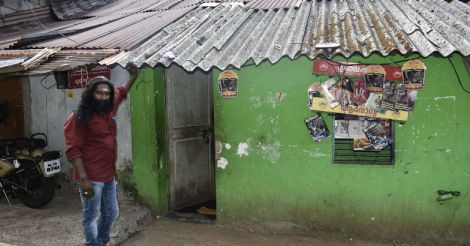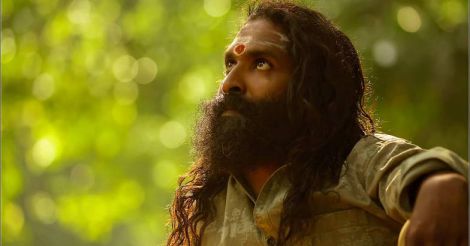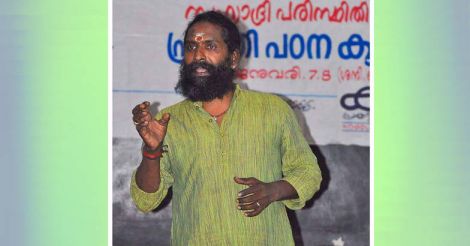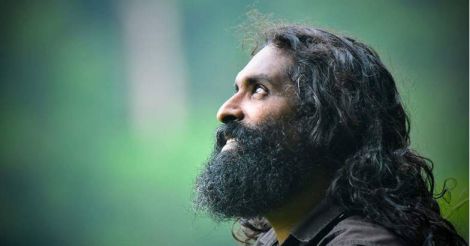Naturalist Baiju K Vasudevan has become the new hero on Kerala's social mediascape by saving a female hornbill and its hatchling from starvation, after the male hornbill was killed by a speeding vehicle on a forest path in Athirappilly. Baiju plays father, friend and guard to animals and birds in distress in the vast forest range on the fringes of Thrissur district. This nature lover and environmental activist had once been a hunter and illicit hooch-maker who scanned the forest for wild boars and deer to kill, consume or sell their flesh!
Onmanorama caught up with Baiju, the real hero of Athirappilly's 'man vs wild' tales to know more about his story of transformation, bond with nature and the hornbill family he's raising now.
Jungle boy
 This nature lover and environmental activist had once been a hunter and illicit hooch-maker who scanned the forest for wild boars and deer to kill
This nature lover and environmental activist had once been a hunter and illicit hooch-maker who scanned the forest for wild boars and deer to killBaiju is the eldest son of Vasudevan and Nabeesa, the protagonists of an inter-faith love story in the mid-1970s. Vasudevan, a Kannur native who worked as a daily-wage employee of the Kerala State Bamboo Corporation, settled down at Athirappilly after marrying his sweetheart Nabeesa. Baiju was born in the middle of a dense forest, in a small hut . He made friends with mynahs, nightjars and owlets by attempting to imitate their sounds. At home, he often had the task of guarding his siblings.
In his childhood, the dense evergreen forests of Athirappilly was untouched by humans, except for the natives and tribals who collected timber and honey from the woods. "I started going into the woods when I was ten. Tribals guided me through trek paths and taught me how to read Nature's signs. If you hear the call of nightjars loudly during daytime, it is an indication that a herd of elephants is advancing towards the area. Nature leaves a lot of signs for even a slight change happening in it," Baiju explained.
Soon forest became cover for illicit activities as Baiju started to hunt wild animals for flesh and distilled hooch in the company of locals and tribes. "We, the foresters, hardly know about the legal aspects of our daily activities. I used to hunt deer and wild boars just like I kill chicken or mutton for meat. I sold surplus flesh to the people who sought it. We never knew that the money they paid us was a commission for destroying nature," the wildlife expert said remorsefully.
Turning point
 Baiju says an interaction with a very upright forest officer called Induchoodan transformed him into a naturalist, wildlife photographer, and environment activist
Baiju says an interaction with a very upright forest officer called Induchoodan transformed him into a naturalist, wildlife photographer, and environment activistWhile continuing his forest pursuits, Baiju cleared the class 10 examinations. A turning point in his life occurred after attending a recruitment camp for the post of forest guard. Soon his attitude towards Nature and life changed. "Not all forest rangers deserve to occupy that post. Some are selfish pleasure seekers who come just to hunt, poach and rejoice, but there are some genuine souls that transform the environment and its people positively. Around 1998, Athirappilly had the fortune of getting a sincere divisional forest officer (DFO) called Induchoodan. He was a true naturalist and a motivator. I attended his lecture just to become a forest guard so that I can hunt animals and make hooch with more freedom. But his words transformed several people who were present there. He enlightened us about the Nature's treasures right in the middle of our base. He spoke about the biodiversity of Athirappilly and the need to protect it. He asserted that birds, animals and insects are our siblings who co-habit this wilderness along with us. His lecture not only transformed me into a nature lover but also helped me realise that one should share one's knowledge with others," Baiju disclosed.
An enlightened Baiju soon took up Malayalam literature, texts on Western Ghat's biodiversity and wildlife photography. His knowledge about the nooks and corners of the local forest range became an asset to the forest officers. His true transformation into a naturalist, wildlife photographer and environment activist had begun.
The hornbill episode
 Nature leaves a lot of signs, says Baiju. Like, the call of nightjars during daytime indicates the presence of elephants, he adds.
Nature leaves a lot of signs, says Baiju. Like, the call of nightjars during daytime indicates the presence of elephants, he adds.It was on April 4, a Wednesday, that Baiju spotted a dead male hornbill on the Athirappilly-Valparai road. The carcass had started decaying, bones revealed from between the feathers. He was moved by the piteous plight of the majestic bird and he took some photographs of it. But as he zoomed in to his catch, Baiju noticed that the bird held berries tightly between his beaks, something the responsible father refused to leave even as he lost life! With a heavy heart, Baiju posted the picture on his Facebook wall with a touching note on man's arrogance towards Nature. The post was flooded with comments, sympathy and reactions within seconds.
But one comment forced Baiju to give a second thought about the whole incident. A nature lover and bird watcher called Sudheesh Thattekkad commented about the possible ways to locate and rescue the starving family of the dead bird. Sudheesh also guided Baiju in the process by suggesting that the nest must be somewhere on the side of the road where the carcass was found. Sudheesh's premise was that the hornbill was struck by a car as it a took a downward slope to reach the nest close by.
The very next day, Sudheesh joined Baiju at Athirappilly for the search. They located the nest of the dead hornbill on a treetop and started feeding the mother bird and child with berries, fruits and worms of their choice. After three days of starvation, the birds accepted food from Baiju's hands with loud screams and cries. The starving mother chewed the food and fed its child first before swallowing her portion down. Baiju terms that sight as a moment of ecstasy for any bird watcher and naturalist.
Baiju has created a wooden beak that looks like that of a male hornbill and has placed it outside the nest. He fills it with berries, worms and insects from time to time. Baiju says that the mother hornbill often rubs her beak against the wooden device assuming it to be her mate's pout. "Hornbills feed females and hatchling with non-vegetarian food only at the time of feather growth. It needs enough amount of calcium to grow good plumes. As the hatchling is maturing, we serve it with lizards, small chameleons, caterpillars and beetles to help hair growth," Baiju added.
The female hornbills shed feathers during breeding season and withdraw to high tree holes to lay eggs and brood. If the male dies during the breeding season, his woman and children often starve to death inside the tree hole. "I was reminded of my own wife and three children. I'm myself a wild creature. My wife Aneesha and kids shall await me in the same manner if something happens to me in the wild. But now I realise that I have invested enough humanity that my family shall receive it back when needed," he remarked philosophically.
Other forest tales
 Baiju's BKV Foundation envisages a nature-friendly generation to protect whatever is left in the wild
Baiju's BKV Foundation envisages a nature-friendly generation to protect whatever is left in the wildThe hornbill death isn't the only wildlife tragedy that Baiju has experienced at first hand. Right from a deer which swallowed 5 kg of plastic in 2010 to the disastrous forest fire that gave a blow to Athirappilly's ecosystem early in 2018, Baiju is familiar with enough incidents that compel him to remain an environmental activist.
"Back in 2010, my journalist friend and I stumbled upon a deer carcass. Though, its flesh and skin had merged with soil and bones had started disintegrating, a big ball which was found towards its belly stood out. It was nothing but a mass of plastic material which it tried to digest from time to time. It weighed almost 5 kg. Though I hesitated to take a photograph of it at first sight, later I thought that more of such haunting visuals should reach the 'civilians' because words and ideas could no more move their minds," Baiju recalled.
During the recent bout of forest fires in the Athirappilly forest range, Baiju, through just one Facebook post, gathered more than 85 volunteers from all parts of Kerala in a bid to tame the fires. "Forest was in need of human intervention. A similar situation needn't arise often. I succeeded in conveying my disturbed state of mind and my irresistible urge to help our woods. A large group of nature lovers, bird watchers, environmental activists and volunteers assembled at the Athirappilly forest range office the next morning. It was a 24-hour-long mission to put off the fire. We descended the hills by 3 am in the next morning," he revealed the impact his Facebook message had created.
Baiju poses a grave question while stressing on the need to rejuvenate our forests. "Our forests are really in need of holidays. People flock at tourist places whenever they get a holiday. Have you ever thought about the plight of Nature when it hardly gets a break to take a deep breath and relax? Do you know that a single day of non-intervention by humans can rejuvenate it significantly?"
Dream project
 Baiju is an active member of Vana Samrakshana Samiti and enjoys the role of a tourist guide
Baiju is an active member of Vana Samrakshana Samiti and enjoys the role of a tourist guideBaiju's BKV Foundation envisages to build a nature-friendly generation to protect whatever is left in the wild. It plans to establish an elementary school named 'School of Life' for tribal children. They will be introduced to Nature and trained to lead a responsible life in the wild. "I'll raise at least 10 volunteers to protect and raise voice for forest," said the father of two boys and a girl.
Out of the forests, Baiju finds time to attend to his duties as a visiting faculty at the Kerala Agricultural University's College of Forestry. He also contributes to Kerala forest department's environment literacy campaign. He has acted in more than eight movies, his latest being famed cameraman Santhosh Sivan's upcoming unnamed directorial venture. Baiju plays the role of a tribal man in it. Afterall, he has always been in the forefront of several tribal awakenings intended to save their habitat, including the stir against the controversial Athirappilly Hydroelectric Project.
He is also an active member of Vana Samrakshana Samiti and enjoys the role of a tourist guide.
Read more: Latest in Green


























 Naturalist Baiju K Vasudevan is the new hero on Keralite social mediascape after he saved a hatching female hornbill and its hatchling from starvation.
Naturalist Baiju K Vasudevan is the new hero on Keralite social mediascape after he saved a hatching female hornbill and its hatchling from starvation.